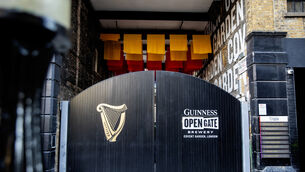Low inflation ranks high on list of concerns
The main refi rate remains at 0.25%, while the deposit rate was unchanged at 0%.
However, it is clear from the meeting that the ECB is unhappy at the prospect of a prolonged period of low inflation and now has a strong bias to ease policy further.
ECB president Mario Draghi indicated that there is a consensus on the council in not being resigned to low inflation and to take action to counteract it.
The ECB indicated that it is prepared to act swiftly, if required, with further monetary policy easing. Indeed, Mr Draghi said the governing council is comfortable with taking action next month.
Before deciding on any action, the council wants to see the next set of ECB staff economic projections, which will be considered at the June meeting. These are likely to contain a further downward revision to inflation forecasts.
There are two reasons for this. First, inflation has been lower than expected recently, averaging just 0.7% in the year to date. The ECB had expected inflation to average 1% in 2014.
Secondly, in its last set of projections, the ECB assumed the exchange rate would remain stable, with the dollar/euro rate averaging $1.36 over the period.
However, the euro has been strengthening, with the rate rising to trade in a $1.38-$1.40 range in recent months.
Mr Draghi said the strengthening of the exchange rate was “cause for serious concern” for the governing council, given the low inflation environment.
The ECB then has left the door wide open for further policy easing at its June meeting. We see only two factors that would cause it to keep policy on hold — an unexpected pick-up in inflation in May or a marked fall in the exchange rate.
The recent soundings from the ECB suggest that it has a preference to cut rates further rather than adopting a full-blown quantitative easing or asset-purchase programme.
In this context, a further cut of 10-15 base points in the refi rate is likely to have just a limited impact. Thus, the ECB may well be forced to cut the deposit rate as well, moving it into negative territory.
It should be noted that the ECB’s principal concern is the marked decline in inflation to well below 1%. The actual economy itself has been on an improving trend in the opening months of 2014.
Retail sales were stronger in the first quarter of 2014, growing by 0.7% after falling by 0.4% in the previous quarter. Meanwhile, industrial production was up 1.7%, year on year, in the first two months of 2014.
In terms of survey data, the eurozone’s composite PMI, a good leading activity indicator, rose to a 35-month high of 54.0 in April. This is above the first-quarter average of 53.1 and much better than the fourth-quarter figure of 51.9. It indicates that the eurozone’s modest recovery has picked up pace.
The European Commission’s economic sentiment index, another leading indicator, has been on a broadly improving trend in recent times. It stood at a near 32-month high in April. Meanwhile, the German Ifo business sentiment index rose to a near 31-month high in April.
Overall, then, the latest data suggests the recovery is gathering some momentum. GDP data due tomorrow is likely to show that the eurozone economy grew by around 0.4% in the opening quarter of 2014. While still moderate, this would represent a doubling of the growth rate achieved over the final three quarters of 2013.
Meanwhile, survey data for April suggests the economy has made a solid start to the second quarter. An ECB rate cut next month would help sustain this recovery in activity.















